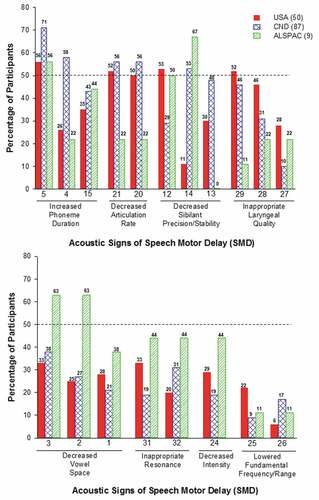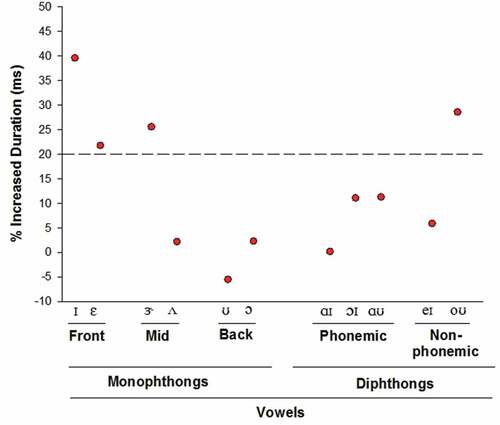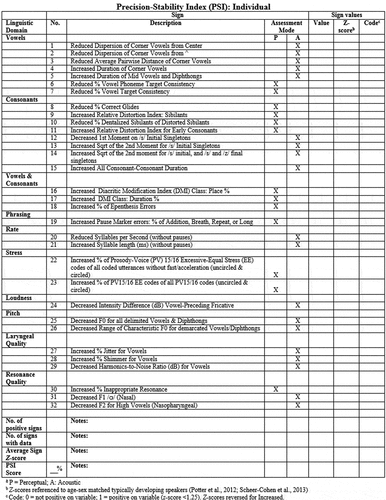Figures & data
Table 1. Description of target participants in three groups of speakers with Speech Motor Delay (SMD) and control participants in two of the three groups. The lower three rows include information on participants in three databases of speakers with typically-developing speech used to standardize measures.
Figure 2. Acoustic signs of Speech Motor Delay in three study groups. The groups are USA = United States of America, CND = Complex Neurodevelopmental Disorders, and ALSPAC = Avon Longitudinal Study of Parents and Children.

Table 2. PSI Sign No. 5 findings for participants in the USA and Complex Neurodevelopmental Disorder (CND) groups with idiopathic Speech Delay and Speech Motor Delay (SMD) compared to control participants with idiopathic Speech Delay and No Motor Speech Disorder (No MSD) in two speech tasks.
Figure 3. Average duration (ms) of the 11 phonemes in PSI 5: Increased Duration of Mid-Vowels and Diphthongs in the continuous speech tasks from participants with idiopathic Speech Delay (SD) and Speech Motor Delay compared to durations of these phonemes from the continuous speech of participants with SD and No Motor Speech Disorder (see text).


